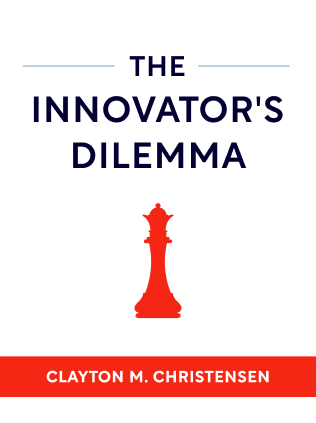

This article is an excerpt from the Shortform summary of "The Innovator's Dilemma" by Clayton M. Christensen. Shortform has the world's best summaries of books you should be reading.
Like this article? Sign up for a free trial here .
How do disruptive projects handle unknown markets? Is it possible to prepare for something you have no information on?
Disruptive projects are often uncharted territory. They are disruptive precisely because they are new and not what consumers are used to.
Read more about how disruptive projects can manage the lack of information.
Market Research and Disruptive Projects
There’s no market research for unknown markets. Most companies and managers make strategies, plans, and decisions based on analyses of market trends and projections based on those trends. Using this data, managers make detailed plans for executing new projects.
The problem is that this approach doesn’t work for disruptive technologies, because disruptive projects sell to markets that didn’t previously exist, so there are no data to measure past patterns or make projections about future needs.
Exacerbating the problem is the fact that success in disruptive innovations favors companies that move quickly—so companies must act fast, but they have little information to create a plan of action.
Solution: Focus Your Strategy on Learning, Not Executing
To accommodate the inherent lack of information, company leaders confronting disruptive innovations need to make strategies and plans around learning, not executing.
Instead of outlining how to execute the production and launch of a product—as they would in sustaining technologies—managers leading disruptive innovations must acknowledge what they don’t know, identify what data they need, and in what order they need it. This discovery-driven planning prevents companies from committing too many resources before they have adequate information.
Additionally, teams launching disruptive projects should:
- Assume forecasts are wrong. Disruptive markets are unpredictable, meaning that the correct marketing strategies are unknowable. Accept that trial and error is inevitable.
- Plan—and budget—for multiple attempts. It’s almost guaranteed that a company will initially choose the wrong strategy to market a disruptive technology, so managers shouldn’t hedge all their bets on the first attempt. Instead, build flexibility into project strategies and conserve enough resources to adjust the product and the strategy as they learn more about the market.
- Watch customers’ behavior as they begin to use disruptive products. Don’t listen to what customers say they want. Until a disruptive product spends some time on the market, neither companies nor customers know who will use a disruptive product or how they’ll use it.

———End of Preview———
Like what you just read? Read the rest of the world's best summary of Clayton M. Christensen's "The Innovator's Dilemma" at Shortform .
Here's what you'll find in our full The Innovator's Dilemma summary :
- Christensen's famous theory of disruptive innovation
- Why incumbent companies often ignore the disruptive threat, then move too slowly once the threat becomes obvious
- How you can disrupt entire industries yourself






